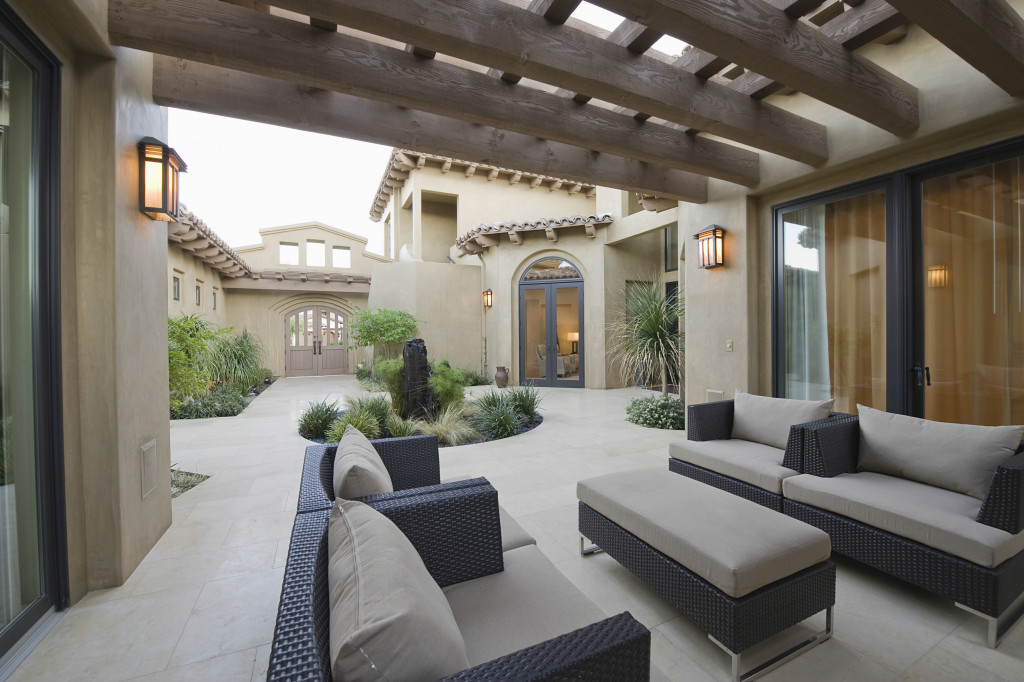Patios rose to popularity during the pandemic when people’s options for outdoor entertainment dramatically fell. And right now, even if the world is slowly going back to normal thanks to the vaccines, at-home entertainment is still adored, so patios are here to stay.
Building a patio is one thing; maintaining it is another. If you live in a subtropical area like Brisbane, humidity can plague your environment pretty often. You may be lucky that winters aren’t as cold in your place, but in the summer, the weather can take a turn. Tropical cyclones and heavy rain will often come your way, exposing your patio to harsh weather conditions.
Without proper maintenance, your patio’s furnishing will degrade fast. If mold starts to grow on the moist furniture, you won’t be able to use them anymore. You can only replace them, which can be expensive.
But those problems are totally preventable. The weather may be out of your control, but its effects on your stuff are definitely within it. So here are some patio-care tips for humid areas like yours:
1. Install the Right Roofing
Your patio’s roofing has a crucial role in the space’s overall comfort and heat. Since a humid area can be unbearably hot during the summer, your patio needs a high-quality insulated roofing system. Insulation systems reduce the heat or cold entering a space, and protect against leaks caused by condensation.
2. Pay More Attention to Your Plant Selection and Care

Plants that thrive in a cool climate struggle to thrive in a tropical area, and vice-versa. But humidity presents a separate set of challenges for plants. A plant that requires high temperatures won’t necessarily find a humid environment friendly. If they can’t deal with higher moisture levels, they might have a hard time spreading nutrients into themselves.
To check if your plants adapt well to humidity, look for “drip tips”, which are leaves that channel water into a pointed end. The leaves should shed excess water, not cup it. If the leaves are cupping water, it means it thrives in dry climates, because it has to preserve water to survive. On the other hand, a leaf shedding water means it has alternate ways to release vapor during humid weather.
3. Choose Tough and Moisture-resistant Floors
Textured tiles are your best option because smoother surfaces like ceramic and porcelain can be slippery when wet. Consider quarry tiles, a flooring material made from a very dense type of unglazed clay. Despite its name, quarry tiles aren’t actually mined, although they used to be.
Quarry tiles give a Mediterranean look to your patio, which may be appropriate if you have a more traditional exterior style. Regarding its quality, quarry tiles are resistant to water and don’t get slippery when wet. It’s perfect for subtropical areas, where winters aren’t freezing cold. But be careful with quarry tiles when you’re handling food, because it stains easily.
Slate is another good option. It’s a type of natural stone, so it’s also textured and strong. As such, it doesn’t get slippery when wet and has good water resistance. Moreover, slate comes in many other colors besides black and dark grey. If you like bold colors, purple, green, and orange slate tiles are also available.
Decking tiles are worth considering as well. They’re weather-resistant, appealing, more luxurious. They just run a little expensive, but there’s a cheaper alternative to it, which is composite decking tiles.
4. Invest in High-quality Furniture

Many people make the mistake of buying cheap furniture for their patio since they’re not going to use them often anyway. But buying cheap can end up costing you more in the long run. Cheap seats are flimsy and too lightweight, so even the occasional rough use will wear them out quickly. If you often lounged in your patio during the pandemic, your cheap furniture may not last until the end of this year.
Mind the material as well. If you often experience hurricanes, avoid wood furniture, even teak, which is supposedly an “all-weather” hardwood. Anything wooden requires regular sealing to keep it protected against cracking and warping. Unless you’re up to that task, then you’re better off without wooden patio furniture. Choose synthetic resin wicker instead to ease down your upkeep tasks.
Speaking of wicker, natural wicker isn’t a good furniture material either because they’re no match for the elements. And unlike wood, there’s no seal that protects it from moisture damage.
Your options on patio furnishing may feel limited because of your area’s climates, but don’t fret; you’ve still got attractive alternatives. Besides, when dealing with outdoor spaces, the function should go before aesthetics. A patio’s pretty furniture won’t be as useful if it’s being beaten up by the weather.







